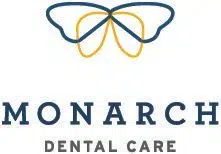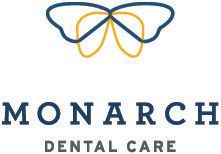
An Innovative Solution to Infected Root Canals
Regenerative endodontics is a cutting-edge approach to treating damaged or infected teeth and an alternative treatment for root canal therapy. This innovative procedure uses the body’s natural healing mechanisms to regenerate new tissue and restore the function of the affected tooth. While traditional endodontic treatments focus on removing damaged tissue, regenerative endodontics aims to restore the tooth to its natural state.
Learn more about this treatment with our experienced Prairie Village dentist’s guide.
What Is Regenerative Endodontics?
Regenerative endodontics (RET) removes damaged or infected pulp tissue and places bioactive material into the root canal. This material contains growth factors and stem cells that promote the regeneration of new tissue, including the pulp and dentin, which make up the core of the tooth. Over time, this new tissue can restore the tooth’s natural function and structure.
The primary goal of RET is to achieve root maturation and apical closure, allowing the tooth to continue its normal development. This treatment approach is particularly beneficial for young patients whose teeth are still developing.
Traditional endodontic treatments such as root canal therapy (RCT) may result in thin and fragile roots, which can increase the risk of tooth fracture over time. RET, on the other hand, aims to stimulate root development, leading to stronger and more resilient teeth.
Candidacy for Regenerative Endodontics
- Age: Regenerative endodontic procedures are most effective in patients under 18 when root development is still in progress.
- Tooth Maturity: Teeth with immature roots and open apices are good candidates for regenerative endodontic procedures, as these procedures can promote new tissue growth and help the root develop.
- Pulp Vitality: Regenerative endodontic procedures are most effective in teeth with vital pulp tissue, as this tissue provides the necessary growth factors and stem cells for tissue regeneration.
- Infection Status: Teeth with active infections may not be good candidates for regenerative endodontics, as the infection can interfere with regeneration.
- Tooth Structure: Regenerative endodontic procedures are most effective in teeth with intact coronal structure, as this provides a protective barrier for the newly regenerated tissue.
- Overall Health: Patients with certain medical conditions or compromised immune systems may not be good candidates for regenerative endodontic procedures, as these procedures require a healthy immune response for successful regeneration.
The Regenerative Endodontics Process
Examination and Diagnosis
Access and Cleaning
Placement of Regenerative Material
Temporary Filling
Follow-up Appointments
Frequently Asked Questions
Discover This New and Modern Dentistry Technique
Regenerative endodontics is a promising new approach to treating damaged or infected teeth. By using the body’s natural healing mechanisms, regenerative endodontics can promote the growth of new tissue and restore the function of the affected tooth. As research continues, regenerative endodontics will likely become an increasingly popular option for dental patients seeking to preserve their natural teeth.
Call our Prairie Village practice at (913) 362-4488 today to schedule an appointment and learn more.

